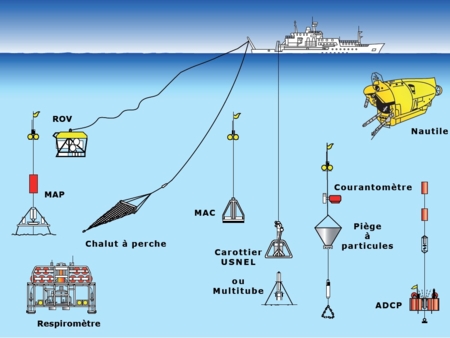Use of molecular approaches to study the diversity and the functions of cultured microorganisms associated with deep-sea hydrothermal vents
Our knowledge of the diversity of marine microbial communities has long been restricted to the precious but incomplete information generated by the culture-based methods. In this study, molecular techniques (PCR, cloning, sequencing, hybridization, metagenomics library construction and genetic markers [16S rRNA, genes coding for enzymes specific to the reverse tricarboxylic acid cycle (acIB, oorA)] were used to circumvent the limits inherent to cultivation methods, and to obtain a more realistic view of the specific and functional diversity of the deep-sea hydrothermal vent microbial communities. This research allowed (i) to confirm the ecological significance of free-living epsilon-Proteobacteria at deep-sea hydrothermal vents, especially during in-situ colonization experiments (this study provides the first example of the prevalence and ecological significance of free-living Arcobacter-like at deep-sea hydrothermal vents, which are supposed to be sulfo-oxidizing bacteria involved in filamentous sulphur formation, (ii) to design and validate a 16S rRNA oligonucleotide probe targeting most of the epsilon-Proteobacteria found in hydrothermal systems, (iii) to obtain the physiology of yet uncultured groups of archea from deep-sea hydrothermal vents using metagenomics. By the combined use of variety of molecular approaches this work enlarges our view of the diversity of microbial communities in deep-sea hydrothermal vents.







